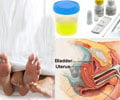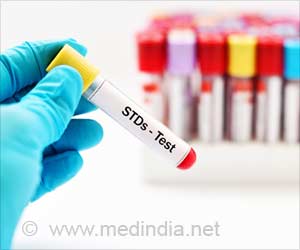
‘More than 75% of patients who receive antibiotics for gonorrhea or chlamydia actually tested negative for gonorrhea or chlamydia. Gonorrhea and chlamydia are two sexually transmitted diseases (STDs) that can be treated with antibiotics in either oral or intravenous form.’
Tweet it Now
Of the 1,103 patients tested, 40 percent were treated with antibiotics for gonorrhea and/or chlamydia; of those treated, 76.6 percent ultimately tested negative for having the STD. Of the 60 percent who went untreated, only 7 percent ultimately tested positive for either or both STDs. "We have to find the appropriate balance between getting people tested and treated for STDs, but not prescribing antibiotics to patients who don't need them," said Karen Jones, MPH, BSN, RN, infection preventionist, St. John Hospital & Medical Center. "There is a tricky balance between not furthering antibiotic resistance by over-prescribing, but also still getting people treatment for STDs they might have."
The study also examined how certain symptoms were associated with positive STD cultures. For example, in male patients, 60.3 percent with penile discharge and 57.5 percent with inflammation of the urethra tested positive for gonorrhea and/or chlamydia. In female patients, 25 percent with inflammation of the cervix and 27 percent with cervical motion tenderness tested positive for gonorrhea and/or chlamydia. Thirty-five percent of patients who disclosed they had more than one sex partner also tested positive for gonorrhea and/or chlamydia. "Focusing on these clinical predictors may improve unnecessary antibiotic prescribing in patients without true disease," said Jones.
"According to the Centers for Disease Control and Prevention, nearly a third of antibiotics prescribed in doctors' offices, emergency rooms, and hospital-based clinics in the U.S. are not needed," said APIC 2016 President Susan Dolan RN, MS, CIC, hospital epidemiologist, Children's Hospital Colorado. "Improving the use of antibiotics is a national and international priority to help prevent antibiotic resistance which would threaten our ability to treat even the simplest of infections."
Source-Eurekalert














